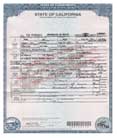| Much of the following is extracted from Influenza Pandemic Preparation and Response: A Citizen’s Guide, by the Mid-Peninsula Citizen's Preparedness Committee. The guide is in the public domain under the Creative Commons Attribution-Share Alike 3.0 United States License. |
Why This is Important

One of the most unfortunate and inevitable aspects of a pandemic is the increase in death rates in the community. This increase might be small or may be catastrophic, depending on the traits of the pandemic flu strain. Even in a moderate pandemic, the coroner's office and mortuary services are likely to become overwhelmed, and families might have to deal on their own with the deaths in the household. This page gives basic information that families can use if they have no guidance from official sources.
What to Do When Someone Dies At Home

- Call your local police department.
- If no physician was in attendance, the police department may call the coroner to make a ruling on the cause of death.

- Be sure to obtain a copy of the death certificate. A death certificate is required for benefits, for insurance, and other purposes.
- While risk of infection is considered minimal, wear protective covering (gloves, mask, etc) when handling the body. Wrap the body in plastic and secure with strong tape.
- The body would be safe in the house for about eight hours depending on the temperature inside the house. After this time it would become a health issue. It is best to place it in the coldest environment possible, outside the house, and away from water sources, including wells. Protect the body from predators or scavengers.
- Put towels and other cleaning supplies used with cleanup of the body in a plastic bag and tie it closed. This will minimize further contamination and illness.
- Consider having a little service at home, allowing children to say goodbye.
How to Know if Someone Dies

To determine the death of a person, check for a pulse in the neck area over the carotid artery by pressing lightly over the artery. This will take about 30 seconds. Put a hand on their chest to feel if the chest is rising, or a small mirror in front of the nose and mouth to determine if there is any exhaling. After a small amount of time, the body will start to change from a normal complexion to a pale color.
After the person has been dead for a time (depending on the temperature of the room) the body's muscles will start to stiffen (Rigor Mortis), and the blood will pool to the lowest areas in the body, causing a bluish color.
Record and Keep This Information with the Body

- Date/time found
- Exact location found
- Name/other known information
- How identified, when and by whom
- Your name, contact information
What Can and Cannot Be Done

- Under no circumstance attempt to cremate a body. Cremation of a body needs to be performed at a very high temperature in an approved crematorium to insure that health issues are addressed.
- Under extreme circumstances where timely body pick-up is not available, the body can be buried in a well-marked grave. If a grave must be shallower than one meter (between 3 and 4 feet), pile heavy rocks on it to keep animals from digging there.
Some Things to Consider

In the event of a pandemic, professionals dealing with the deceased will most likely be overwhelmed.
- It may take days, if not longer, for the body to be picked up from your home.
- With infrastructure damaged, the ability and capacity to store, transport, and process bodies may be severely disrupted, depending on the area and stage of the pandemic.
- While it may take longer for bodies to be picked up, authorities will do everything they can to retrieve the body in a timely manner.